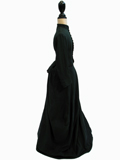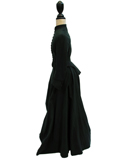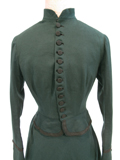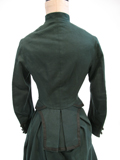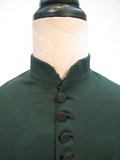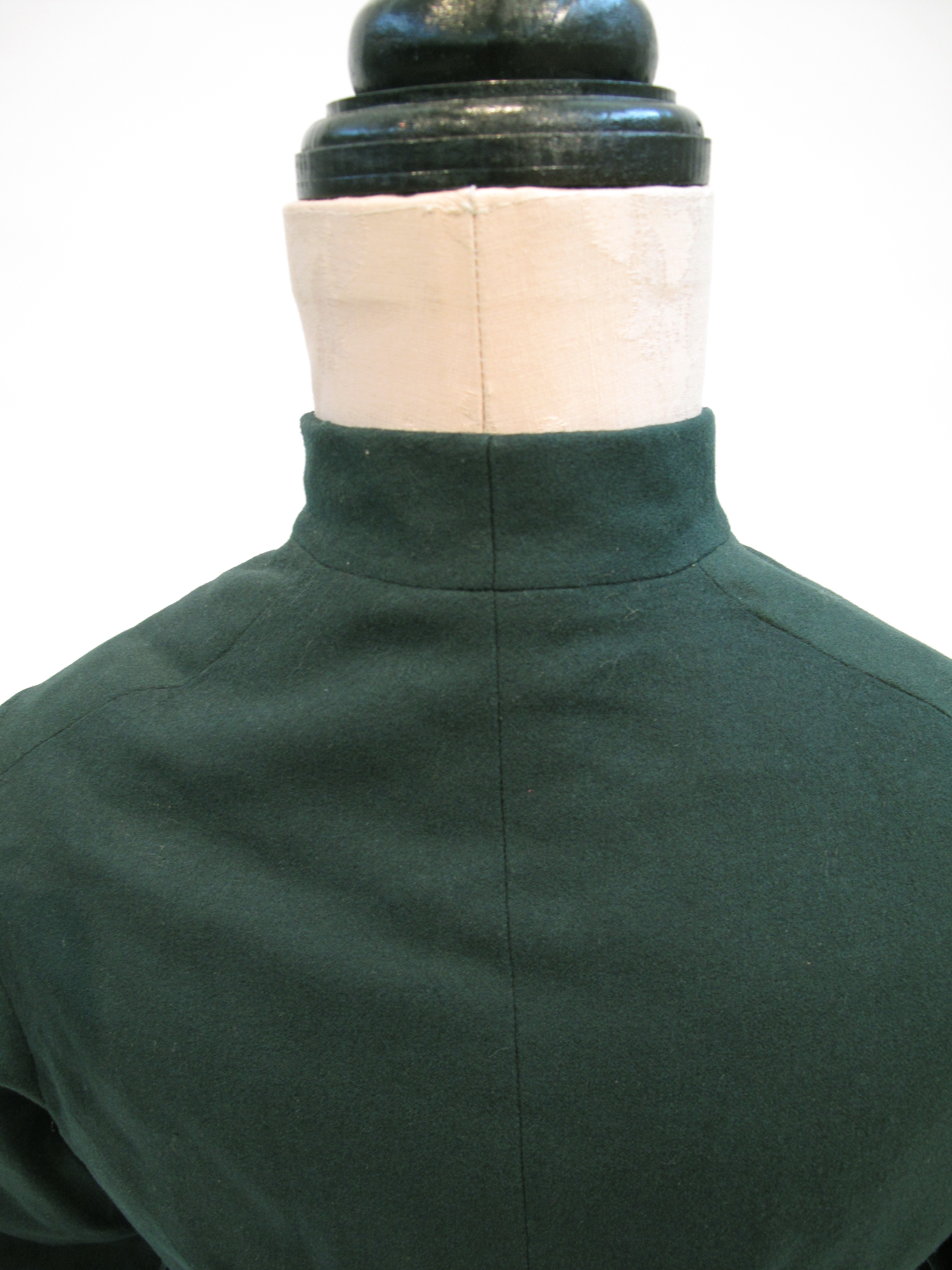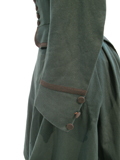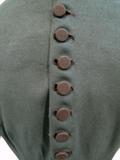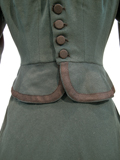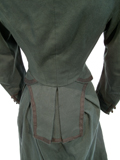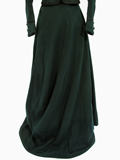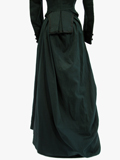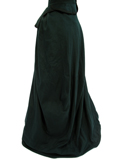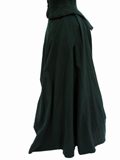This two-piece green boiled wool riding habit with black fabric covered buttons, cotton sateen lining and black braid trim for a woman, c.1886, has a label in the jacket that reads "H.M. Fahy, Philadelphia." It would have been worn for riding side-saddle. The jacket is lined with cotton sateen but the skirt is unlined. The wool is a medium weight with an almost indiscernible grain.
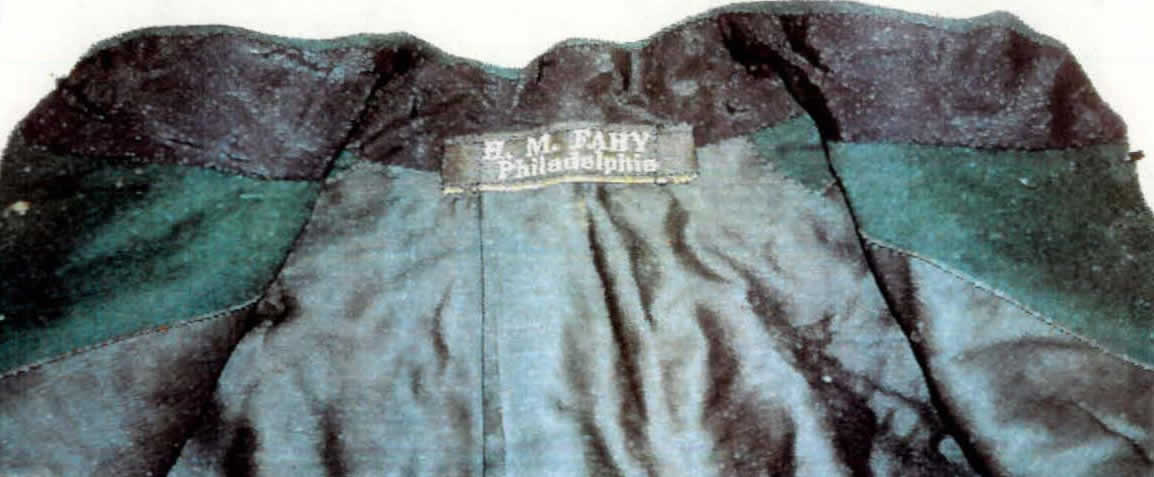
Background
Whether riding for war, transportation, sport or pleasure, there is a long history of garments made especially for riding, whether it be aside a horse or astride. The first true sidesaddle was thought to be inspired by Henry II's wife, Catherine de Medici, in the early sixteenth century. This saddle shape allowed women to modestly sit aside a horse with their skirts about them, rather than astride with on leg on either side of the horse. Riding astride was considered unladylike and less aesthetically pleasing. According to Jean Druesedow's essay in Man and the Horse: An Illustrated History of Equestrian Apparel, it was rumored that at the end of the eighteenth century, Thomas Oldaker, a huntsman to an English Earl, broke his leg and was unable to hunt. He subsequently devised a new saddle to more firmly control the position of his legs. This sidesaddle became very popular with the ladies and in turn a special sidesaddle skirt was devised which enabled the hemline to be straight across even while mounted on the horse. It used a minimal amount of fabric so the appearance was neat and clean. This feature can be viewed in the skirt in this habit.
Jacket
The jacket hooks to the skirt at the side seams, and the front and center back, as seen in Image 1 below. The jacket has breast padding inside in the shape of a heart. Quilted 1/4" apart with a minor amount of batting inside, a heart was sewn into the lining after the darts were put in and the facing was attached, as shown in Image 3 below. The trim is a black braid trim 3/8" wide and appears on the peplums and the sleeves. This braid is also used to finish the 3" hem on the skirt. There are 1/4" bones inside bodice seams (as indicated on the pattern). A separate waistband of white braided ribbon is inside along the waistband, as show in Image 2 below. This ribbon is handstitched to the inside of the garment at the centerback and side side back panels and then allowed to fall freely around the waist with hooks and eyes at the center front. This is used as a waist stay to hold the garment close to the body. There are twelve 3/8" black fabric covered functioning buttons down the center-front along with twelve opposing handmade black keyhole buttonholes. Three decorative buttons are sewn on each two piece sleeve. The three peplum pieces overlap each other in the side side back panels. Each piece contains a small round weight, indicated on the pattern. The back piece is inverted box pleated; the pleats are held stable by a smaller 1/4" black braided ribbon which has been hand whip-stitched in place. Each piece is lined with black sateen and has the braided trim outlining the bottom seams.
|
Image 1: Connections between jacket and skirt |
Image 2: Internal waistband | Image 3: Heart-shaped quilting |
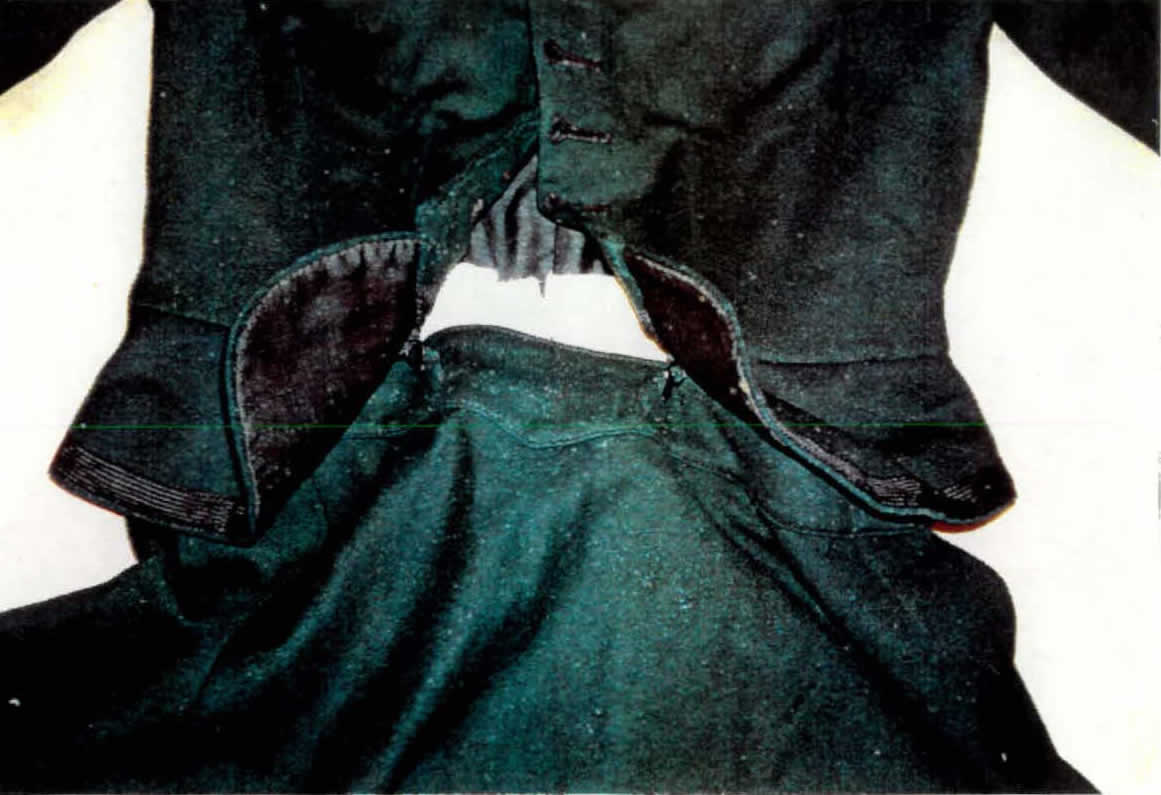 |
 |
 |
Skirt
The skirt is of the same green boiled wool fabric and is unlined. The waistband, which is slightly pointed downward at the center-back and center-front, is lined and has covered hooks that hook onto the eyes of the jacket waistline. The skirt is asymmetrical and no two pieces are alike or on the fold. Neither of the seams are true side seams, but rather fall 3" forward of the side on the wearer's right, and 4" back on the wearer's left A slit in the fabric is made with a pocket inserted at the actual side of the body. This pocket is cut separately out of the sateen and faced with the wool. There is a buttoned placket with hidden buttons down this slit made from the sateen, which pulls over and hides the pocket., as shown in Images 4 and 5 below. The pocket in turn pulls around the body to button to a hidden button just off centerfront on the inside of the waistband. These buttons are all the same buttons as used on the jacket. The actual skirt body has a large dart on the wearer's right side at knee level. The dart is taken from both the front and the back panels, longer and deeper in the back.
The back skirt of the skirt is an inverted box pleated in the back with 6 pleats (three on each side) folded toward the centerback. The side seam is all the way back around on top of the first pleat on the right side. The back skirt piece also has a pieced bottom of one long strip 11" from the hem. The front skirt piece continues the same dart but rather than adding the straight piece to the hem, the front has an asymmetrical seam pointed toward the hem, slanting from the pieced back on the right side to the hem on the left. Two pieces are added to make the hem level when worn astride a horse. The larger piece on the right side contains a stirrup panel for the foot to rest in. Inside the skirt there is a panel of the black sateen which has a 9" piece of braid attached only on each end to allow for use as a stirrup, as shown in Image 6 below. The hem is turned 3" under and is held up with the same 3/8" black braid used on the jacket. The hemline also contains the same small round weights as used in the peplum; their placement is indicated on the pattern.
| Image 4: Detail of skirt opening | Image 5: Pocket extension | Image 6: Stirrup Panel |
 |
 |
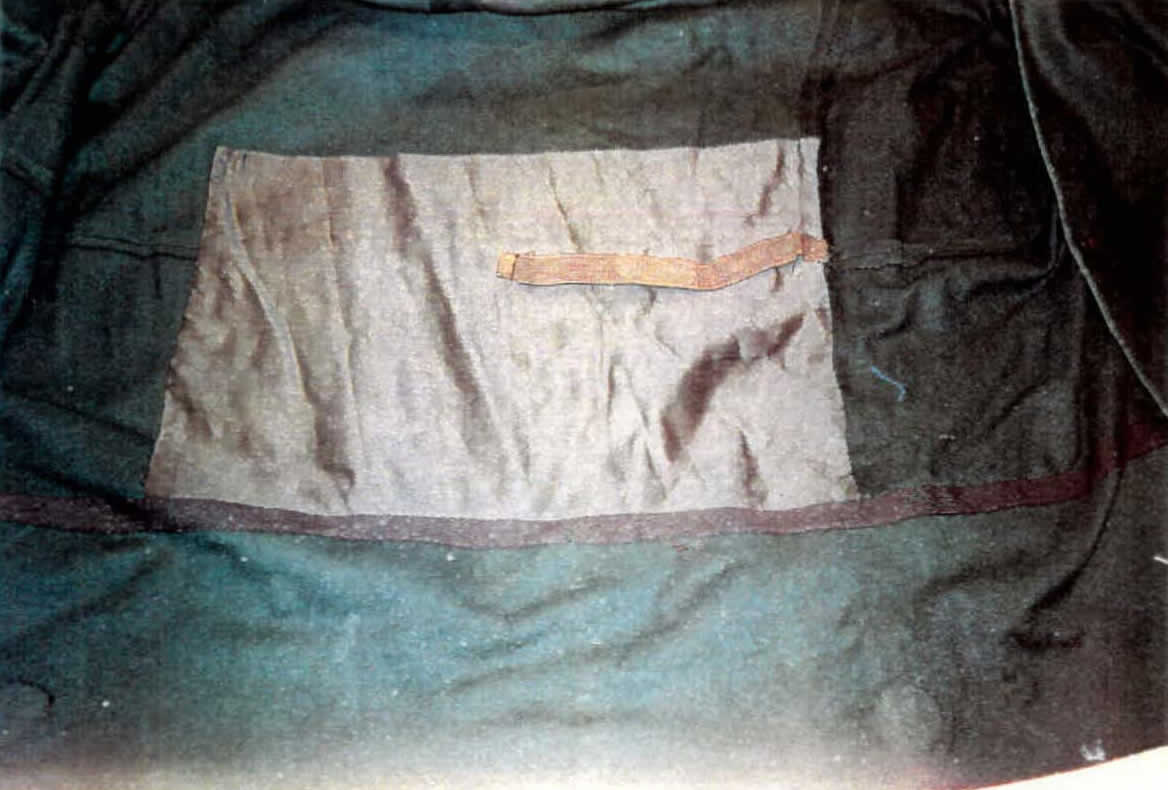 |
Damage
The garment was worn only lightly and is in quite good shape. There are some moth holes and discoloration.
Pattern
Scale is 1/8' = 1". The jacket has a 28" bust measurement and a 21" waist measurement. No reproduction was created when the garment was researched and the pattern drafted.
© Brooks Ann Camper, 2002


